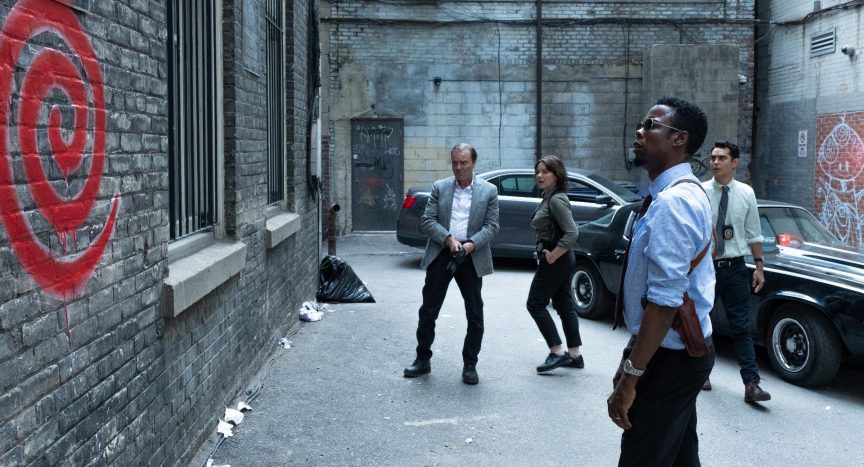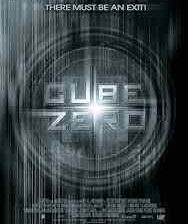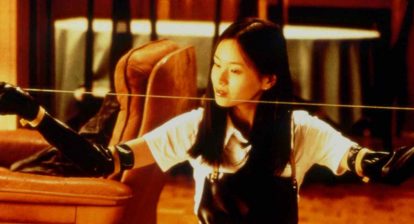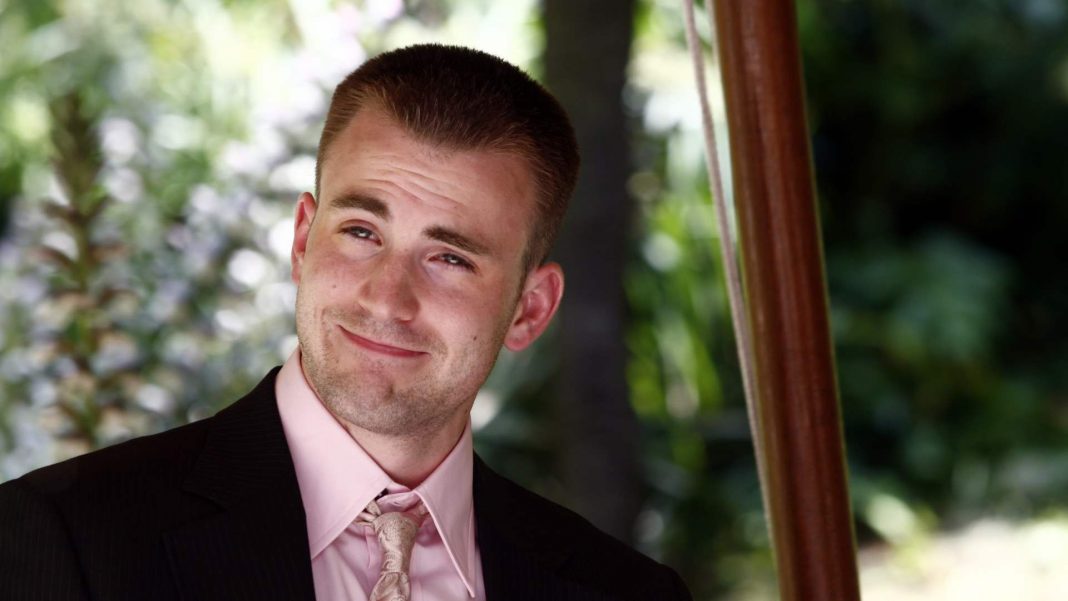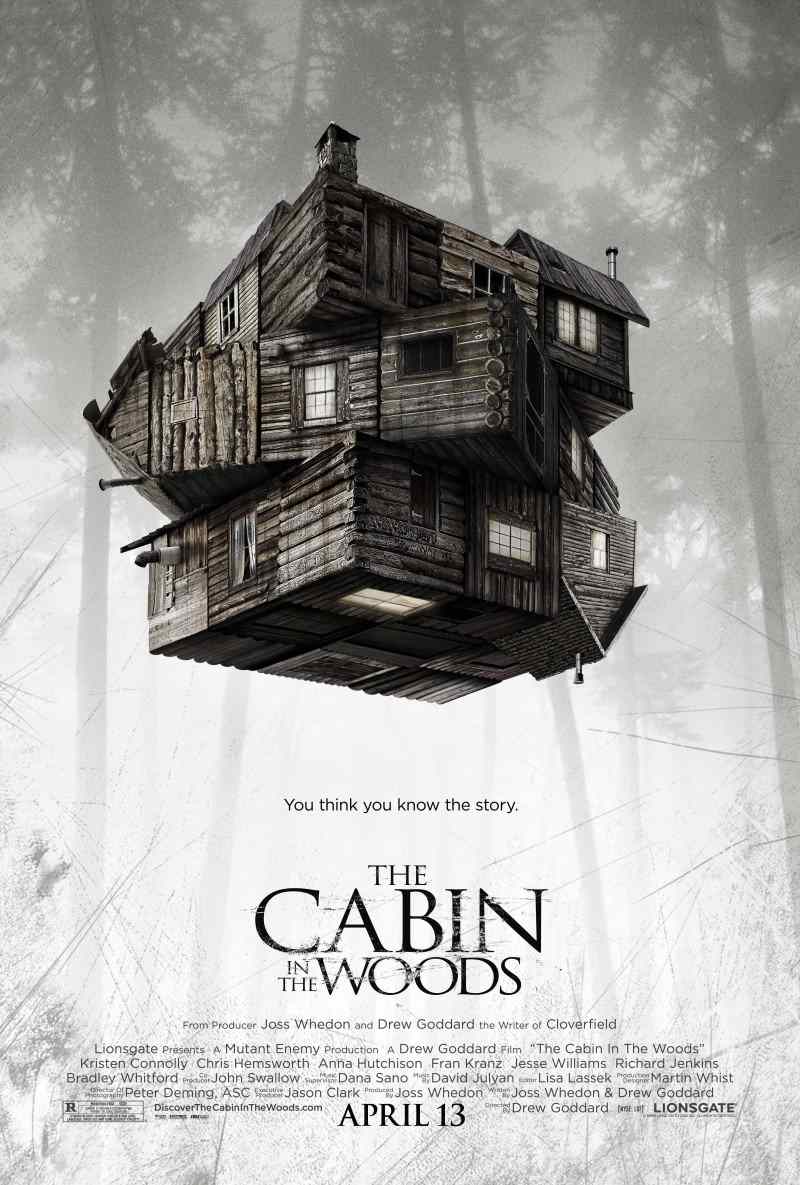Lionsgate and Twisted Pictures’ Saw franchise has hit two major milestones with the release of Spiral: From the Book of Saw. It is the 6th Saw film to be #1 at the box office and the franchise has also crossed the billion-dollar mark. One man who knows the franchise very well, having scored all nine films, is composer Charlie Clouser. Clouser’s “Hello Zepp” theme has become one of the most notable horror themes for this generation, being listened to tens of millions of times across Youtube alone and even getting a new rendition by 21 Savage for Spiral titled “Zepp Nine”. To learn more about his work on the Saw franchise and more recently Spiral, we spoke to the musical master himself, Charlie Clouser, in the below exclusive interview.
Spiral is still in theaters and this week was released on VOD and Digital. Clouser’s Spiral score is also available digitally.

Wicked Horror: You have scored numerous horror films, besides the Saw franchise, including Dead Silence, The Stepfather and The Collection. What do you think it is about your style that keeps drawing you to this genre?
Charlie Clouser: I’ve always been attracted to dark and scary sounds, ominous melodies, and chaotic feelings in music, and these seem to be a natural fit for horror films, where atonal and dissonant elements don’t feel out of place. I love the way Kubrick used the work of composers like Ligeti, Bartok, and Penderecki, and the way those intense compositions evoke a sense of the otherworldly, the supernatural, or just insanity, and there’s plenty of that in the films I score. Heavy rhythms and pounding beats that might feel too over-the-top in many genres seem to work really well for intense horror scenes, and the directors never seem to say, “I think you’ve gone too far on this one, can you pull it back a little?” While it can be a challenge to keep finding ways to turn things up to eleven, it feels like a natural progression from the style of records I was involved with earlier in my career, where we really did crank things up and try to push the limits.
Wicked Horror: Spiral marks your fourth Saw film you have worked with director Darren Lynn Bousman. What does your working relationship look like now? Does he come to your studio or is it all over Zooms?
Charlie Clouser: Darren’s a treat to work with, he’s got great instincts and can communicate his thoughts effectively, and since we completed Spiral just before Covid sent everyone into lockdown we actually worked at my studio quite a bit just as we had in the past. We’d spend a long day spotting where the music should go and what it should be doing, and then I’d hole up in the woodshed for a couple of weeks sketching things out. After I had a reasonable pile of music to play him, I’d summon him out to the sticks and we’d pick apart the material and make tweaks, adding an emotional moment here and an unexpected jump-scare there. But after so many films together, and so many films in the franchise, it’s becoming second nature for both of us, and we’ve arrived at a common musical vocabulary, so it’s never like pulling teeth – even if it’s a scene where teeth are being pulled.

Photo credit: Zoe Wiseman
Wicked Horror: In a previous interview you have said you have a “Saw toolkit”. Can you tell us a few things in that toolkit?
Charlie Clouser: To me there are a lot of sounds that feel right for a Saw movie but might not work in a different scenario, like old-school industrial drums and insane orchestral effects, but there are also a bunch that I only use in these films. I have a few custom-made sculptural metal instruments that can be played with violin bows or mallets, and these make sounds that have become such an integral part of the sonic fabric of the Saw universe that I don’t use them on other projects. It’s almost like they’ve become characters in the films, like Billy the puppet, and it would feel weird to hear them in another context, just as it would feel weird to see Billy ride his tricycle into a scene in a non-Saw movie. Those instruments can make sounds ranging from ominous moans to tortured screams, and they instantly evoke a feeling of terror and dread. Despite my history with synthesizer-heavy music, for the Saw movies I don’t use synths very much, letting them hide in the background while the metallic tones take the lead. So my toolkit consists of the custom metal instruments, some of the hardest sounds from my years making industrial and metal records, the wildest and most chaotic orchestral effects I can find, and a lot of sounds made by heavily processing guitars through a ton of effects, which is where some of the most evil drones come from.
Wicked Horror: The track ‘Train Tunnel’ is pretty amazing. Going from mysterious at the beginning to incredibly intense by the end. Are tracks like this some of your favorite to score, because you can do so much with them?
Charlie Clouser: I do look forward to the big trap scenes in the Saw movies, because they’re usually the biggest “set pieces”, with the widest range from small and ominous to huge and intense. They usually incorporate some quiet, spooky, “creeping around” sections before exploding into total insanity, and by the time they’re finished they often become quite elaborate, with the tempo increasing as we race to the inevitable conclusion. Working on those cues sometimes feels a bit like building a toothpick sculpture, where a zillion tiny elements have to be stacked up and glued together just right or else the whole delicate mess will collapse, but its always a fun and challenging process, and very satisfying when I feel like I’ve gotten it right.

Wicked Horror: What would a Saw movie be without the famous Hello Zepp theme. The “Zepp theme” is renamed “Zepp Nine”, for Spiral and almost has an action movie feel to it. Why did you decide to go in this direction for Spiral?
Charlie Clouser: Since the story line and characters in Spiral are a bit of a departure from earlier Saw films, I felt like there were elements of thriller and action movies that could work in the score in ways that would have felt a little out of place in the other films in the franchise. Instead of taking place entirely in darkness in some abandoned warehouse or evil lair, there’s plenty of scenes that occur outdoors, in broad daylight, which is a rarity in a Saw movie. Those hot and sweaty settings naturally lead me to bring in a different set of sounds, more bright and pointy than dark and murky, and tighter sounds playing more urgent rhythms seemed to be a better fit this time around. It’s nice to see the franchise take a hard left down an interesting side alley for Spiral, and that gave me a little freedom to expand the sonic palette beyond what felt right for many of the other films. There’s still plenty of the murky darkness for sure, but having another layer of high-energy material added here and there hopefully helps to give the score a fresh boost of intensity this time around.
Wicked Horror: Did you use any found objects for your Spiral score?
Charlie Clouser: There’s a good bit of scrap metal percussion forming the underpinning of some of the trap and action scenes, recorded using things from the plumbing aisle at the hardware store, bits of steel bars from my neighbor’s scrap pile, and even playing the metal railings and giant steel girders at my house. After I’d get the tempo and basic rhythmic framework for a few of those cues mocked up, I’d spend an afternoon just working up a sweat, going wild banging on that stuff, playing along to the rough wire-frame versions for a bunch of cues. Then there would be a few days of editing, processing, and finding ways to integrate those recordings into the body of the score, sometimes taking bits from one cue and using them in another, sometimes manipulating the recordings beyond all recognition. In the quiet middle section of the “Wax Angie” cue there are some grinding, tonal sounds that were originally bits of fast percussion that I used time-stretching and pitch-shifting to turn into pitched elements that sound almost like chainsaws, and on the “Pig Truck” cue there’s a good bit of more normal scrap percussion forming the high percussion elements. Even before I know exactly where I’m going with the score, I always like to record a lot of material that just feels right for the project, because I know that if I just play to my instincts I can find a way to make it all fit together in the end.
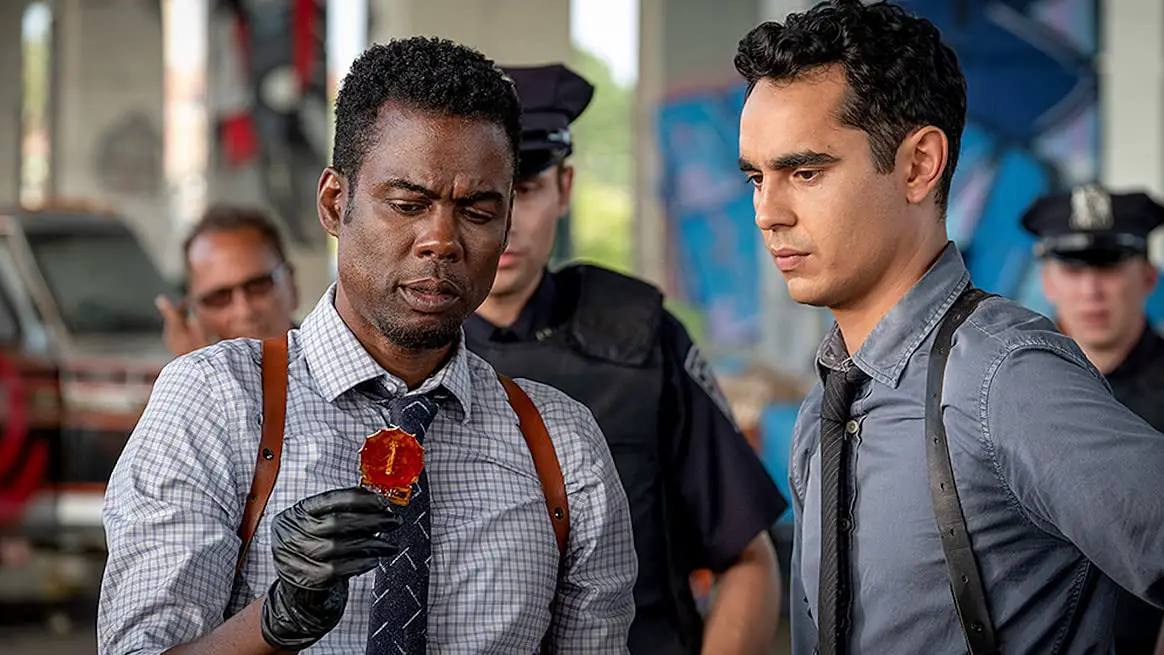
Wicked Horror: At what point were you brought on to begin working on Spiral?
Charlie Clouser: I had been in conversation with Darren and the producers as they were shooting, but I didn’t begin work in earnest until I saw a rough cut of the picture. Instead of just writing tuneful pieces that might work in a variety of different scenes, the way I approach a Saw score is very much tied to the exact pacing and timing of each scene, so I really need to have as close to a final cut of the picture as possible before I can really get down to work. I did begin sketching some of the early scenes with Zeke in the police station just after reading the script, trying to get a feel for his character and find a voice for the conflict between him and the other detectives, and those early sketches did form the backbone of some of the scenes in the police headquarters in the first act, where we hear the low brass chord progressions, and in the end I think they worked quite well. But the majority of the score was composed while watching an almost-finished edit of the picture. For a Saw movie, I really want my score to be a reaction to, and inspired by, what I’m seeing on the screen as opposed to what I’m reading on the page. Besides the raw story line, it’s the performances, the cinematography, the pacing, and even the lighting that give me so much information to inform what I’m going to try to accomplish with the score. Since the visual effects can take quite a bit of time to get sorted out on their end, I usually have a decent window of time to work on the score even after the picture is “locked”. Of course, there are always minor tweaks to the timing of some scenes, and the inevitable back-and-forth with the MPAA as the director fiddles with the edits in hopes of staying within the bounds of an “R” rating, and those changes might upset my apple cart a little bit but hopefully not flip it over completely.

Wicked Horror: I imagine you are a horror fan. What are some of your favorite horror films?
Charlie Clouser: Well, I do love a good multi-installment series, like Halloween, Friday the 13th, or of course Saw, but some of my favorites are one-offs that sometimes come from a little out of left field. Danny Boyle’s 28 Days Later was a surprise favorite of mine, with a fantastic score by John Murphy, and more recently I really liked A Quiet Place and Jordan Peele’s Us. Like everybody else in the world, I also love Alien and Aliens, and The Terminator and Terminator 2 : Judgement Day, and although some might think of them more as action or sci-fi, I reckon they’re pretty much horror films in plot and structure, but set in science fiction worlds. But my all-time favorite is Stanley Kubrick’s The Shining, which I’ve watched more times than might be prudent. I know that some Stephen King purists might not like how Kubrick took certain liberties with how he interpreted the book, but I still remember seeing it when it came out and coming out of the theater in an completely altered state. Kubrick’s stark imagery, symmetrical framing, the unhinged performances from Shelly Duvall and Jack Nicholson, and of course the amazing music are the “ne plus ultra” of the horror genre for me.
Wicked Horror: Who would you love to collaborate with that you haven’t yet?
Oooh, that’s a good question. Am I allowed to say Stanley Kubrick? No? Okay, then I’ll have to go with Denis Villeneuve, whose films seem to have a bit of Kubrick’s pacing and stark framing, and a sense of calm tension, if that makes sense. Although there’s probably very little chance of me getting in the room with him, I love his films, especially Prisoners and Sicario, and I loved the scores that the late Johann Johannsson composed for both of them. Great stuff.
